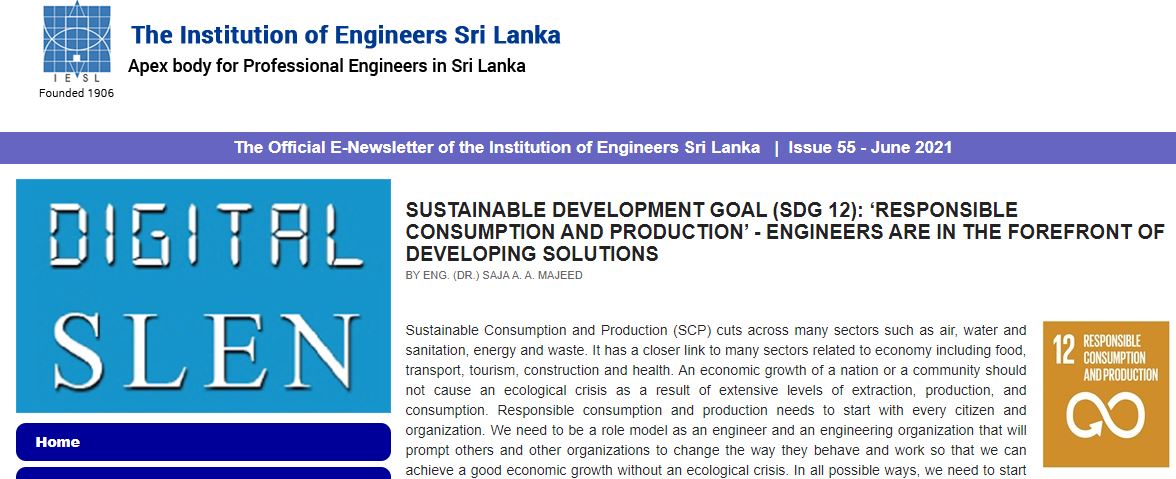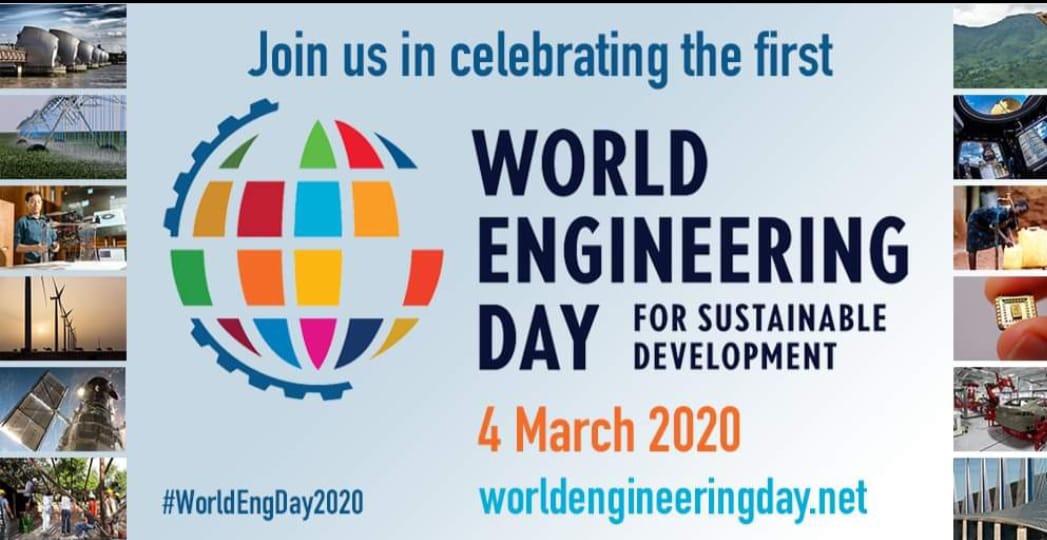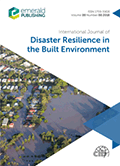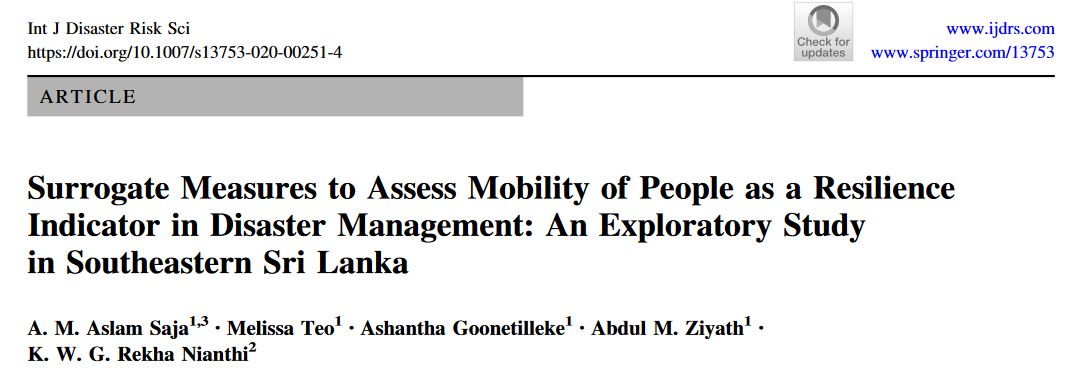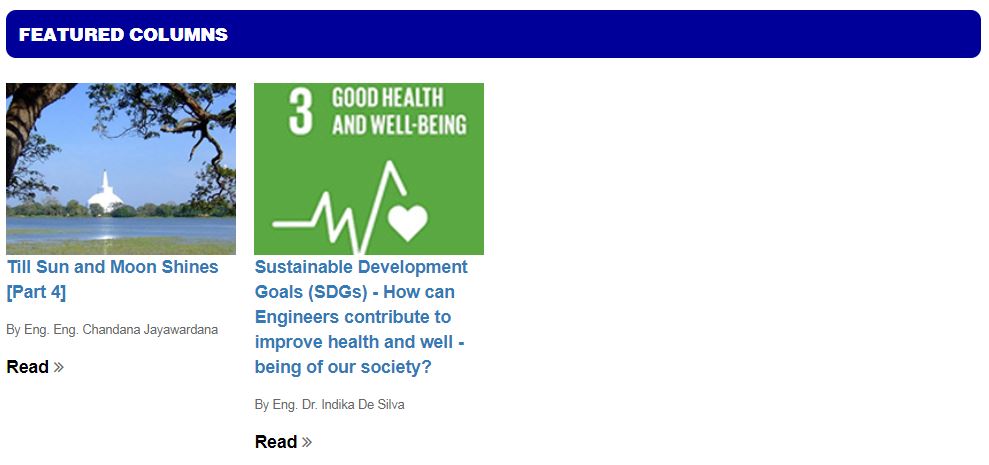SUSTAINABLE DEVELOPMENT GOALS (SDGs) – HOW CAN ENGINEERS CONTRIBUTE TO ATTAIN QUALITY EDUCATION IN OUR SOCIETY?
https://iesl.lk/SLEN/47/SDG5.php
Education is fundamental to every human being that contribute to develop a healthy and progressive society. Every profession in this world is built on quality education at different levels based on set of qualifications and their respective attributes in a professional environment. The SDG link to Engineering Education, and more largely STEM education (Science, Technology, Engineering, and Mathematics) can be in different ways, that include Engineering contribution to enable the access to education to all those who are deprived of education, the contribution of new Engineering technologies to advance education, and it could also be the revitalisation of Engineering education by Engineers itself.
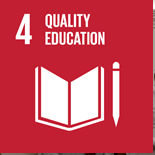
Engineering solutions can improve the quality of the education facilities through new technologies to reach children and youth who have not been reached to date in accessing basic quality education. For example, innovative methods such as using off-grid solar system to power a classroom in a community that has no access to grid electricity, a mobile engineering workshop or a laboratory in a rural village to teach science to school children, or a service learning project by engineering students to enhance secondary level exam qualifiers to tertiary education. The 14 grand challenges for Engineering in the 21st century by the National Academy of Engineering also proposed “Advance Personalised Learning” as the first grand challenge, highlights the priority of quality education in the modern complex world to solve more complex problems than ever (http://www.engineeringchallenges.org).
How do Engineers contribute to achieve quality education? and how can we do better in the future in the context of achieving Sustainable Development Goal (SDG) 4 – ‘’Quality Education”, which is to ensure inclusive and equitable quality education and promote life-long learning opportunities for all. A research finding revealed that more engineering students than students in non-STEM fields (business and education) have a strong sense of personal responsibility regarding critical sustainability issues in sustainable energy and waste management (Wilson 2019), yet we have a long way to go to integrate and well position engineering graduates with more responsibility towards sustainability.
According to United Nation statistics, 750 million people still remain illiterate and two third of them are women. The global key figures related to quality education include (UN 2019):
- 262 million children and youth aged 6 to 17 were still out of school in 2017 (one out of five children)
- More than half of children and adolescents (617 million) are not meeting minimum proficiency standards in reading and mathematics in 2015,
- Many developing countries still lack basic infrastructure and facilities to provide effective learning environments.
The achievement of SDG 4 can be seen as a corner stone and integral part of achieving other SDGs in some way, since education and awareness in sustainable development is key for further progressing other SDGs. Engineering skills are key to build a sufficient workforce (SDG 8) that will develop the infrastructure to enhance the living standards of people (SDG 9) and address global issues such affordable energy (SDG 7), resilient cities (SDG 11) and settlements and adequate water and sanitation facilities (SDG 6).
SDG 4 sets out seven key targets and three additional targets for resource mobilisation and policy to be achieved by 2030. The nine key targets are:
4.1. By 2030, ensure that all girls and boys complete free, equitable and quality primary and secondary education leading to effective learning outcomes
4.2. By 2030, ensure that all girls and boys have access to quality early childhood development, care and pre-primary education so that they are ready for primary education
4.3. By 2030, ensure equal access for all women and men to affordable and quality technical, vocational and tertiary education, including university
4.4. By 2030, substantially increase the number of youth and adults who have relevant skills, including technical and vocational skills, for employment, decent jobs and entrepreneurship
4.5. By 2030, eliminate gender disparities in education and ensure equal access to all levels of education and vocational training for the vulnerable, including persons with disabilities, indigenous peoples and children in vulnerable situations
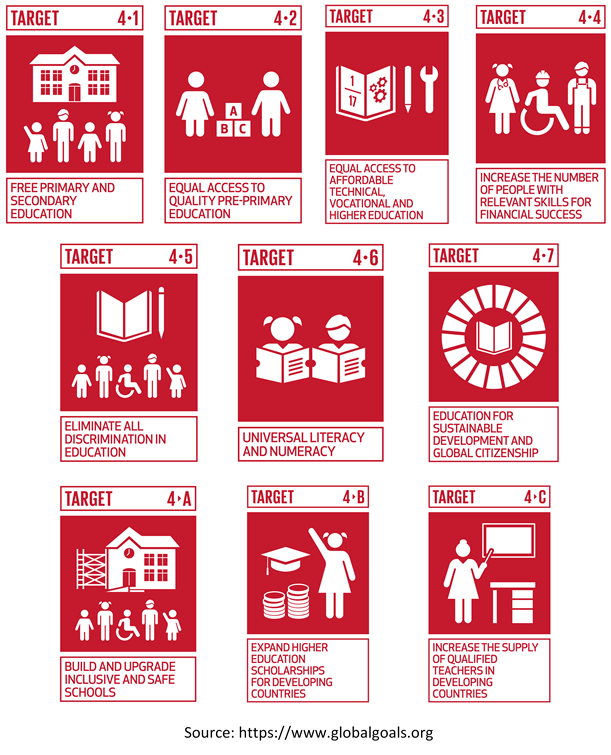
4.6. By 2030, ensure that all youth and a substantial proportion of adults, both men and women, achieve literacy and numeracy
The resource mobilisation and policy related targets are to:
4a. Build and upgrade education facilities that are child, disability and gender sensitive and provide safe, nonviolent, inclusive and effective learning environments for all
4b. By 2020, substantially expand globally the number of scholarships available to developing countries, in particular least developed countries, Small Island developing States and African countries, for enrolment in higher education, including vocational training and information and communications technology, technical, engineering and scientific programmes, in developed countries and other developing countries
4c. By 2030, substantially increase the supply of qualified teachers, including through international cooperation for teacher training in developing countries, especially least developed countries and small island developing states.
The achievement of quality education is measured by many indicators. The key indicators are:
- Children at the end of primary and lower secondary achieving at least a minimum proficiency level in reading and mathematics
- Participation rate of youth and adults in formal and non-formal education and training
- Proportion of youth and adults with information and communications technology (ICT) skills
- Proportion of schools with access to basic infrastructure facilities such as electricity; information and communication technologies, basic water, sanitation, and hygiene facilities, and materials for students with special needs.
- Proportion of teachers in pre-primary, primary, lower secondary and upper secondary education who have received at least the minimum organized teacher training.
Detail indicator descriptions are available at https://unstats.un.org/sdgs website.
The current status of achieving SDG 4 in Sri Lanka was reported in the recent review by the Government of Sri Lanka (SLVNR 2018). The access to education in SDG 4 is ensured in early childhood development, primary and secondary education and in the tertiary education including university, technical and vocational education. Sri Lanka has an impressive primary and lower secondary education completion rates, which is more than 96% (SLVNR 2018). The enrolments in tertiary education and Technical and Vocational Education and Training (TVET) are still at the lower level, which is around 20% of 20-24 years youth population. Further, less than 50% of the students enrol in natural sciences stream and most of the schools that offer natural sciences stream are concentrated in urban areas.
The contribution from the Science, Technology, and Innovation (STI) to achieve SDG4 could include: the introduction of technology can be used to advance inclusion and equity in education (i.e. assistive technology, mobile technology, and open and distance learning), increased use of technology in education, initiatives to support innovation and start-ups for young engineering graduates, and skill development programs and certifications as continuous professional development for practicing engineers. The World Federation of Engineering organisations (WFEO) also implements projects in line with the SDG4, such as reviewing and developing standards for engineering education to meet current and future needs of industry and society and capacity building for engineering education systems, accreditation and registration to meet the needs for engineers around the world (www.wfeo.org).
In the next issue of digital SLEN, we will continue with the snapshot of SDG 5: Gender equality. All SDGs are well connected, and thus require a holistic view to address real development challenges. Until then, let us reflect on SDG 4 – Quality education and their implication to Engineering profession. Your comments on how we as Engineers can contribute to achieve SDGs can be posted in the following IESL Facebook page https://www.facebook.com/IESLSriLanka/ .
In the next issue of digital SLEN, we will continue with the snapshot of SDG 4: Quality education. All SDGs are well connected, and thus require a holistic view to address real development challenges. Until then, let us reflect on SDG 3 – Good Health and Well-being and their implication to Engineering profession. Your comments on how we as Engineers can contribute to achieve SDGs can be posted in the following IESL Facebook page https://www.facebook.com/IESLSriLanka/ .
References:
- https://unstats.un.org/sdgs/indicators/Global%20Indicator%20Framework%20after%202019%20refinement_Eng.pdf
- https://www.wfeo.org/wp-content/uploads/stc-young_engineers/WYEC-BROCHURE_FINAL_VERSION.pdf
- Achieving the United Nations Sustainable Development Goals, Engineering a better world, Royal Academy of Engineering, 2016. https://www.raeng.org.uk/publications/other/engineering-a-better-world-brochure
- Sri Lanka Voluntary National Review on the Status of Implementing Sustainable Development Goals, Ministry of Sustainable Development, Wildlife and Regional Development, Published by the Ministry of Sustainable Development, Wildlife and Regional Development in June, 2018.
- Ensure inclusive and equitable quality education and promote lifelong learning opportunities for all, United Nations, 2019, Infographic UN SDG 4 – Quality Education. https://www.un.org/sustainabledevelopment/wp-content/uploads/2019/07/E_Infographic_04.pdf
- Wilson, D. (2019). Exploring the Intersection between Engineering and Sustainability Education. Sustainability, 11(11), 3134.

Eng. Saja A.A. Majeed
Lecturer
Faculty of Engineering, South Eastern University of Sri Lanka.


